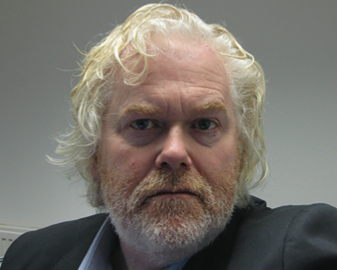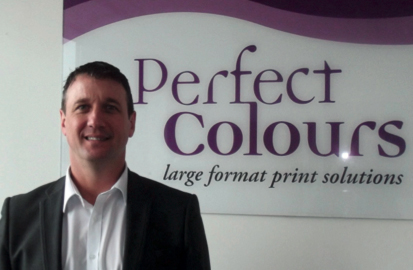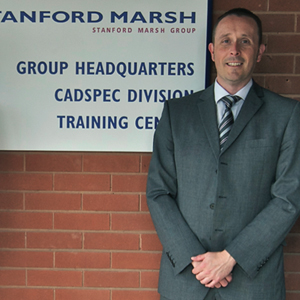Do distributors and resellers add value to the products they sell? Nessan Cleary takes a look at this crucial supplier network.
When it comes to buying new kit it’s easy to think about specs and prices but an important ingredient in every purchase is the way that it’s sold and supported. In some cases, particularly with the bigger, more expensive flatbeds, themanufacturers will deal direct with customers. But often the sales and support is outsourced to specialist distributors backed up by a network of dealers that have developed relationships with customers, possibly in niche areas that it’s hard for the equipment manufacturer to reach alone.
Not surprisingly, each manufacturer defines its own sales channel depending on the experience it wants to give the customer. This also depends on whether or not the manufacturer has a UK base, with many nowadays choosing to have a European centre only, backed up by national distributors that are then the main point of contact. Even in those situations where the manufacturer does have offices in the UK, it may not have the necessary support infrastructure.
 John Draycott, marketing manager for Art Systems, says that each sector requires a different approach, explaining: “For example, the HP latex space is solutions-led but the entry-level Canon technical printers are about pricing. There is a multitude of differences between these two extremes.”
John Draycott, marketing manager for Art Systems, says that each sector requires a different approach, explaining: “For example, the HP latex space is solutions-led but the entry-level Canon technical printers are about pricing. There is a multitude of differences between these two extremes.”
Draycott says that distributors such as Art Systems set certain criteria that their resellers must commit to, such as organising marketing campaigns or training for end users. He adds: “We give them support as a value add distributor and they use this resource to help them deliver to the customer.”
Art Systems will also tailor the support package offered with a printer or a bundle, either offering back- up to the reseller or a contract with the end user. According to Draycott: “It’s really down to how the reseller wants to achieve that support contract.”
Jeff Biggs, managing director of Colourgen, says there must be added-value at each level throughout the chain: “Some have extensive knowledge of their clients’ markets and businesses, some provide their own Rip, installation and application solutions.”
 As a distributor, Colourgen takes care of the warranty and any other servicing issues for most of its vendors. Biggs points out: “For a reseller to provide servicing they need to have a fairly large organisation to be able to respond on the next day basis that the customers expect.”
As a distributor, Colourgen takes care of the warranty and any other servicing issues for most of its vendors. Biggs points out: “For a reseller to provide servicing they need to have a fairly large organisation to be able to respond on the next day basis that the customers expect.”
Thus it is that although customers register their printers with the manufacturer, there’s a good chance that it will be Colourgen that actually takes care of any servicing.
Biggs says that Colourgen also provides a demo centre where resellers can take customers: “Invariably the end client wants to see the kit running their own files, but they can see our organisation and the level of support we offer.”
Of course, one could ask how much support a modern printer needs, given that wide-format inkjet is a mature technology and that successive generations of printers should become more robust. Biggs admits that it’s harder to sell support packages but points out that people still want peace of mind, particularly if their business depends on a particular bit of kit running regularly.
 Then there are those companies that take the lead as distributor for one product, while working as a dealer for others. Perfect Colours, for example, is one of several resellers for HP but the sole supplier for Durst's entry level Omega 2, as well as the UK's master reseller for GMG’s ProductionSuite as regards the wide- format market. Simon Landau, graphics and colour director, says: “Our aim is to be a one stop shop with the devices, the software, the consumables and the servicing as required.”
Then there are those companies that take the lead as distributor for one product, while working as a dealer for others. Perfect Colours, for example, is one of several resellers for HP but the sole supplier for Durst's entry level Omega 2, as well as the UK's master reseller for GMG’s ProductionSuite as regards the wide- format market. Simon Landau, graphics and colour director, says: “Our aim is to be a one stop shop with the devices, the software, the consumables and the servicing as required.”
Perfect Colours has built up its own engineering division across the country, which Landau says is an important asset: “We try to offer a level of service to our clients that will facilitate them in purchasing systems from us.”
Landau also points out that manufacturers are nervous about which companies they allow to support their products saying: “It's very easy for their reputation to be tarnished by poor support.” He adds: “It can be down to how fast we get an engineer out. Sometimes it’s how well the customer has been trained in using the kit. If they aren't trained to a high enough level to maintain the kit then that can be a problem.”
Adrian Painter, a director with Stanford Marsh, says that the best way to add value is to work with customers to understand their needs and give advice. He adds: “A lot of people are looking for help to grow their business. We try to advise them for their long term needs.” He says that this is the best way to ensure that customers come back.
Painter admits that many customers will just look for the cheapest product, adding: “We do charge a premium for it because we hope that people recognise that making the right investment has a better ROI.”
 Stanford Marsh sells a broad mix covering CAD, 3D and graphic arts. The business is expanding, having recently become a reseller for the Mimaki range. Stanford Marsh also has its own finance company, which allows it to offer deals such as 0% finance.
Stanford Marsh sells a broad mix covering CAD, 3D and graphic arts. The business is expanding, having recently become a reseller for the Mimaki range. Stanford Marsh also has its own finance company, which allows it to offer deals such as 0% finance.
Naturally dealers are ideally placed to provide feedback on equipment. In some cases they can advise customers on up and coming equipment and whether or not they should hold off investing if a new machine is just about to be launched.
Depending on a distributor’s relationship with the manufacturer, it may be involved in product development, feeding back information as to what features customers are looking for and what problems they have encountered that could be solved by redesigning some features.
Biggs says that, in some cases, Colourgen has been able to improve the performance of a given printer. He explains: “We have created special profiles that have allowed us to run the Seiko printers faster. We have used less ink which creates a wider gamut and the image printing and colour quality is perfect so the new Seiko will print at 50m2/hr rather than the claimed 33m2/hr.”
There’s no easy answer as to what sets one dealer apart from another, as it mainly comes down to the relationship that individual customers want to have with their suppliers. Most dealers believe that they distinguish themselves through the quality of the advice that they offer to their customers, but there’s also the question of how much faith the customer has in the dealer in terms of how it steers them towards
A better measure is the level of support, who actually provides the service engineers and how close they are to individual customers. The actual service contract should stipulate exactly what parts are covered and most dealers should be able to provide good advice as to the expected lifespan of the major components. It’s also worth checking the warranty in fine detail as the parts covered will give an indication as to how robust the machine is likely to be in use.
{jathumbnail off}

